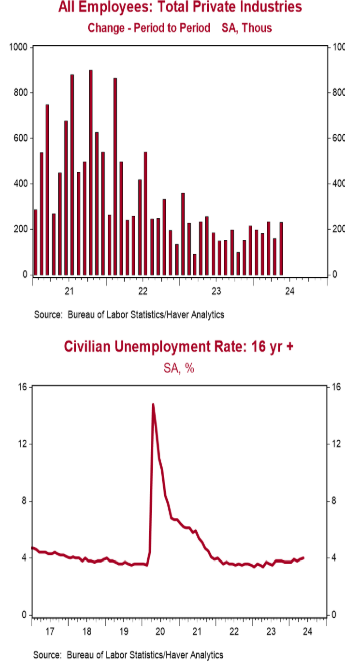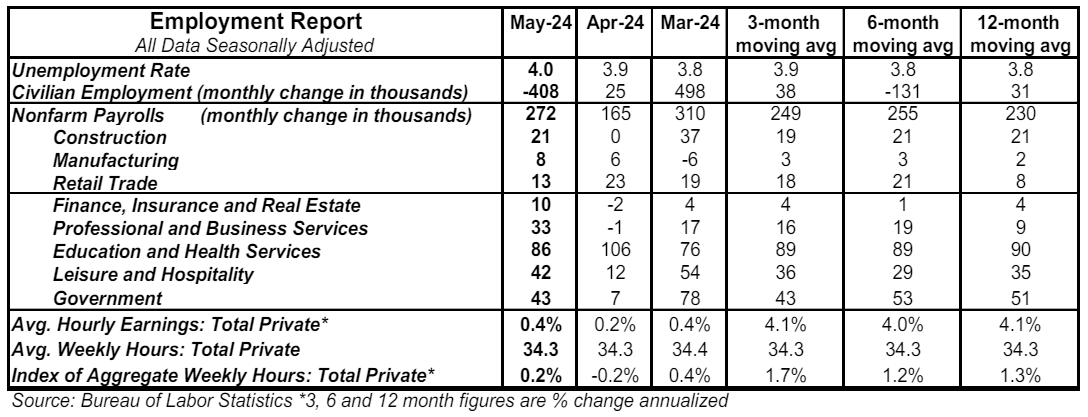- Nonfarm payrolls increased 272,000 in May, easily beating the consensus expected 180,000. Payroll gains for March and April were revised down by a total of 15,000, bringing the net gain, including revisions, to 257,000.
- Private sector payrolls rose 229,000 in May but were revised down by 20,000 in prior months. The largest increase in May was health care & social assistance (+84,000), followed by leisure & hospitality (42,000). Government rose 43,000 while manufacturing increased 8,000.
- The unemployment rate ticked up to 4.0% in May from 3.9% in April.
- Average hourly earnings – cash earnings, excluding irregular bonuses/commissions and fringe benefits – rose 0.4% in May and are up 4.1% versus a year ago. Aggregate hours increased 0.2% in May and are up 1.3% from a year ago
Implications: Even with blemishes, the job market is still too strong for the Fed. First the good news. Nonfarm payrolls rose 272,000 in May, easily beating the consensus expected 180,000. Total hours worked rose 0.2% and are up 1.3% from a year ago. Average hourly earnings increased 0.4% in May and are up 4.1% from a year ago, both beating inflation. We like to follow payrolls excluding government (because it's not the private sector), education & health services (because it rises for structural and demographic reasons, and usually doesn’t decline even in recession years), and leisure & hospitality (which is still recovering from COVID Lockdowns). That “core” measure of payrolls rose a respectable 101,000 in May, the second fastest pace in the past twelve months. Now for the blemishes. Civilian employment, an alternative measure of jobs that includes small-business start-ups, dropped 408,000 in May while the labor force (people who are either working or looking for work) declined 250,000. As a result, the unemployment rate ticked up to 4.0%, the highest since January 2022. The labor force participation rate (the share of adults in the labor force) declined to 62.5% and the employment rate (the share of adults who are working) declined to 60.1%. Much has been written lately about whether the immigration surge at the border is behind solid continued payroll growth. If so, you’d expect job growth in the payroll survey to beat the growth of civilian employment (which is based on a survey of households that probably fails to measure illegal immigrants). That’s consistent with both May and the past year, as payrolls have grown 2.8 million while the employment measure is up only about 400,000. Even using the civilian employment figures the foreign-born share of the workforce is now 19.2% versus 16.6% a decade ago. The alternative reason for the general trend of slower employment growth is that this is what sometimes happens when the economy is at a turning point toward a recession. We continue to believe the year ahead will be weaker than the past couple of years.





